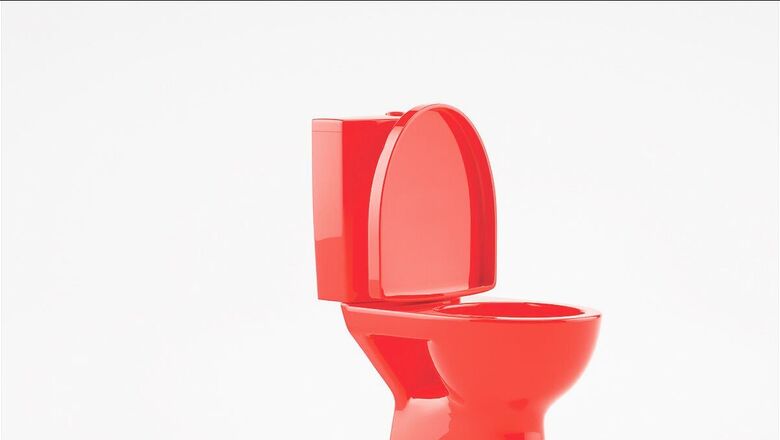
views
For anyone who has grown up in India, monsoons are a time of magic. The heat disappears, the air feels crisp and cool, and trees seem to double their size overnight. Everyone is happier, and more willing to make time for a cup of tea and pakoras. Driving in the rain becomes a family pastime… until someone has to go to the toilet.
No matter how gorgeous the weather, the magic of the monsoon pales in comparison to the panic induced when a little child that really needs to go is confronted with a muddy, smelly toilet. India has come a long, long way in toilet access and hygiene, especially after the Swachh Bharat Mission; but the monsoons are a hard time to keep public toilets clean and usable.
Monsoons are our reality, and with climate change, they’re getting stronger and more erratic. This means that our toilets and sanitation infrastructure need to keep up. Monsoon-proof toilets are specifically designed and constructed to withstand the challenges posed by heavy rainfall. These toilets incorporate various features and techniques to maintain their cleanliness and functionality even during monsoons. Let’s be clear – the monsoons are formidable. We can’t design toilets that are 100% monsoon proof, just as we can’t design monsoon proof cities, stadiums, public transport or any other public utility, but we can improve our designs that better mitigate the challenges we face during the monsoon.
The main challenges and risks of monsoon-related toilet damage
To design and build resilient toilets, we need to understand the main challenges and risks that toilets face during the monsoon season. These challenges include:
- Flooding: can also cause toilets to overflow or leak, contaminating the surrounding environment with faecal matter and wastewater.
- Erosion: can damage or destroy toilets by undermining their foundations, and weakening their structures.
- Structural Damage: caused by the force of floodwaters.
The risks that arise from monsoon damaged or disrupted toilets can have an outsized impact on the community’s health and environment.
- Contamination of Water Sources: When toilets are flooded, there is a high risk of faecal matter and wastewater contaminating nearby water sources.
- Disruption of Sanitation Services: Monsoon-related damage to toilets can disrupt sanitation services, leaving communities without proper facilities for hygiene and waste management.
- Health Risks: The lack of functional toilets during the monsoon season can increase the risk of open defecation, which further exacerbates the spread of diseases. Environmental Impact: The contamination of water sources can lead to pollution of rivers, lakes, and other water bodies, harming aquatic ecosystems and biodiversity.
The key design principles and features of monsoon proof toilets
To address these challenges, resilient toilets should be designed with specific features and principles in mind. Some key design principles that have worked well worldwide are:
- Elevated Structures: that help prevent floodwaters from entering the structure.
- Flood-Resistant Materials: like reinforced concrete or fibre-reinforced plastic can increase the durability and longevity of the toilets.
- Proper Drainage Systems: and waste management systems can handle increased flow (during flooding) and prevent the contamination of local water bodies.
- Reinforced Foundations: are better able to withstand the pressure exerted by floodwaters and can provide the necessary stability, preventing structural damage.
- Ventilation and Natural Lighting: can help prevent the growth of bacteria, reduce odours, and create a pleasant user experience.
These are, however, the baseline for monsoon-proof toilets. There are a number of solutions that are really pushing the envelope on sustainable and efficient toilets that require much lower maintenance.
Nature-based solutions use natural processes or elements to address environmental challenges. They can help improve water quality, reduce flood risk, enhance biodiversity, and provide social and economic benefits. For instance:
- Constructed wetlands: use plants, soil, and microorganisms to treat wastewater from toilets. They can remove pollutants, pathogens, nutrients, and organic matter from the wastewater, making it suitable for reuse or discharge.
- Rain gardens: are shallow depressions planted with native vegetation that capture and filter stormwater runoff from roofs, pavements, or other surfaces and can reduce the amount of runoff that enters the sewer system or water bodies, preventing flooding.
Decentralised systems are systems that treat and manage wastewater from toilets at or near the source, rather than transporting it to a centralised facility. Some examples of decentralised systems for toilets are:
- Composting toilets: that convert human excreta into compost, a nutrient-rich soil amendment that can be used for gardening or agriculture. Composting toilets don’t need water or sewer connections.
- Biogas toilets: use anaerobic digestion to convert human excreta into biogas, a renewable energy source that can be used for cooking, lighting, or heating, in addition to a liquid fertiliser that can be used for irrigation or crop production.
Smart technologies for monitoring and managing water levels help take corrective action in time.
- Sensors: can measure various parameters related to water, such as depth, pressure, flow, quality, and temperature.
- Pumps: can be used to drain excess water from the toilet or to supply water to the toilet when needed.
- Valves: can be used to prevent backflow of water from drains or sewers into the toilet or to divert water from different sources or destinations.
Creating Monsoon-Proof Toilets and Infrastructure
Step one is awareness. This article, for instance, has (hopefully) given you plenty of food for thought regarding your own toilet, and for public toilets in your locality. It’s only when we know what’s possible, that we know to ask for it. The same goes for our policy makers, our municipal leaders, our activists and several stakeholders who are involved in shaping our built environment.
This is why Harpic and News18’s Mission Swachhta aur Paani has, for the last 3 years, served as a platform that brings together stakeholders together to explore, debate and create solutions around toilet use and maintenance. It also serves as a reliable repository of information on every conceivable topic around toilet use, and how it impacts us individually, as well as the larger society. Whether it is the information you need to talk to your own child about toilet hygiene, or to your local municipal officer about upgrading local public toilets, Mission Swachhta aur Paani has you covered.
Mission Swachhta aur Paani advocates inclusive sanitation, ensuring access to clean toilets for everyone. It promotes equality regardless of gender, abilities, castes, or classes, emphasising that clean toilets are a shared responsibility. It works by enabling us – by giving us the information we need, by sparking ideas and conversation, by identifying ways in which we can contribute to something larger than ourselves.
What we talk about matters. Join us here, to learn how you can contribute to this national transformation.




















Comments
0 comment